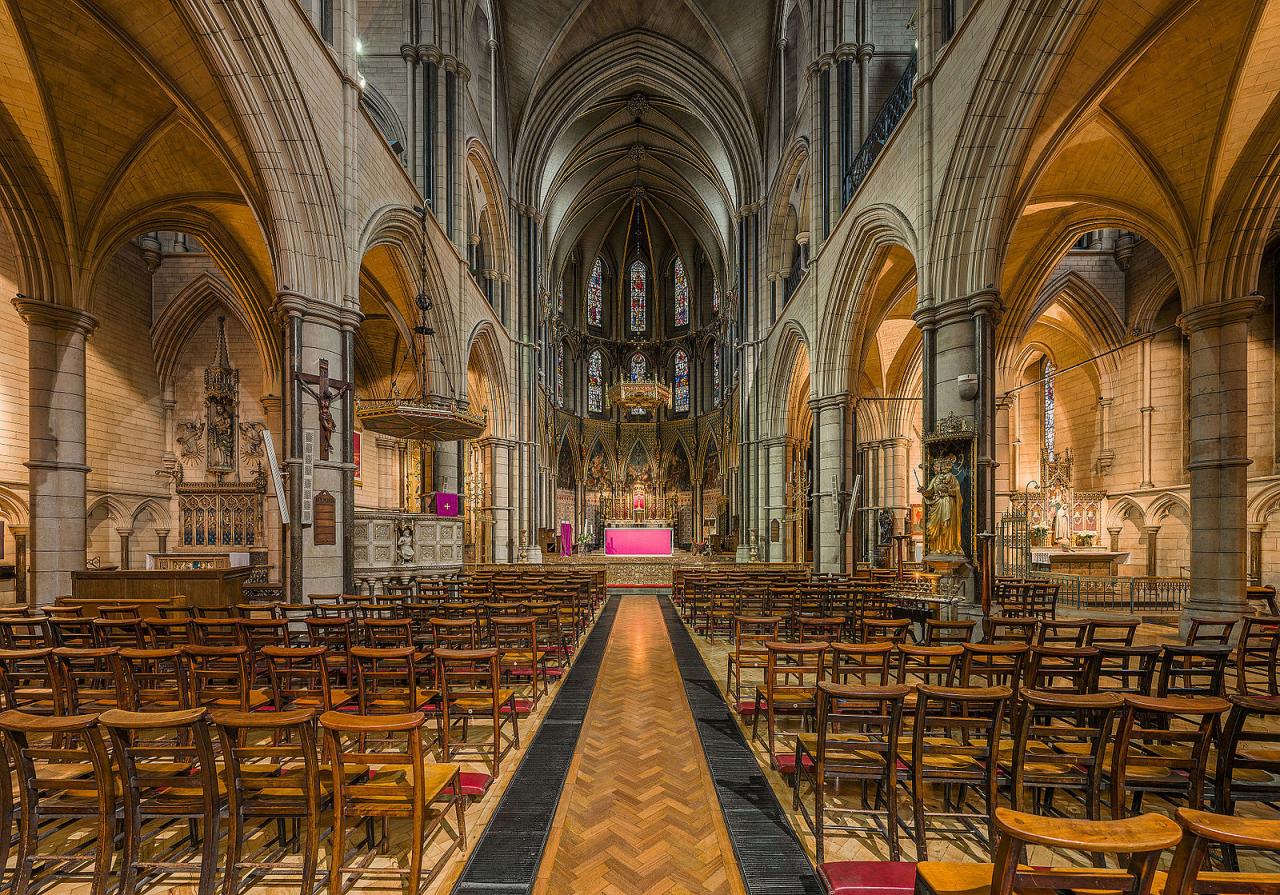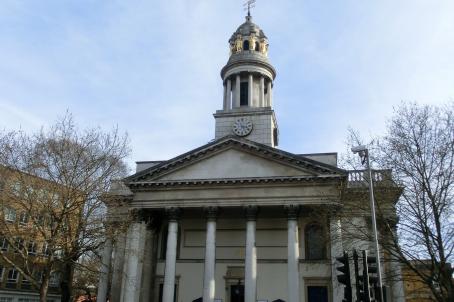St James
The successor church to the Spanish Embassy chapel by Bonomi was built by his great grandson, Edward Goldie, following a limited competition. Early English Gothic was the prescribed style but the design also drew on French Gothic models. The church was extended westwards during the First World War. Bentley provided furnishings for five chapels and shrines. Situated on a tight site, its height and detailing make the church a local landmark, despite lacking its projected tower and spire.
About this building
For more information visit on this building visit www.explorechurches.org/church/st-james-spanish-place






